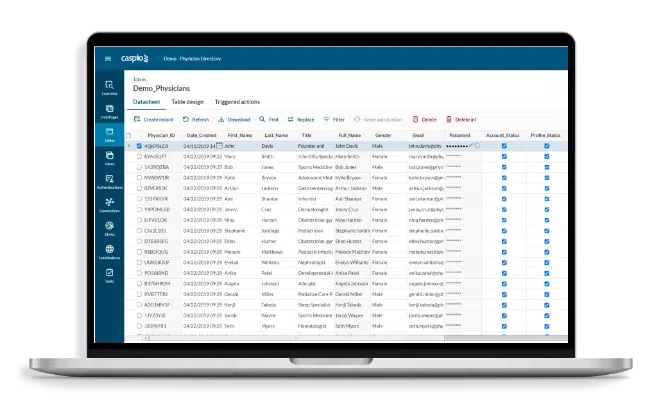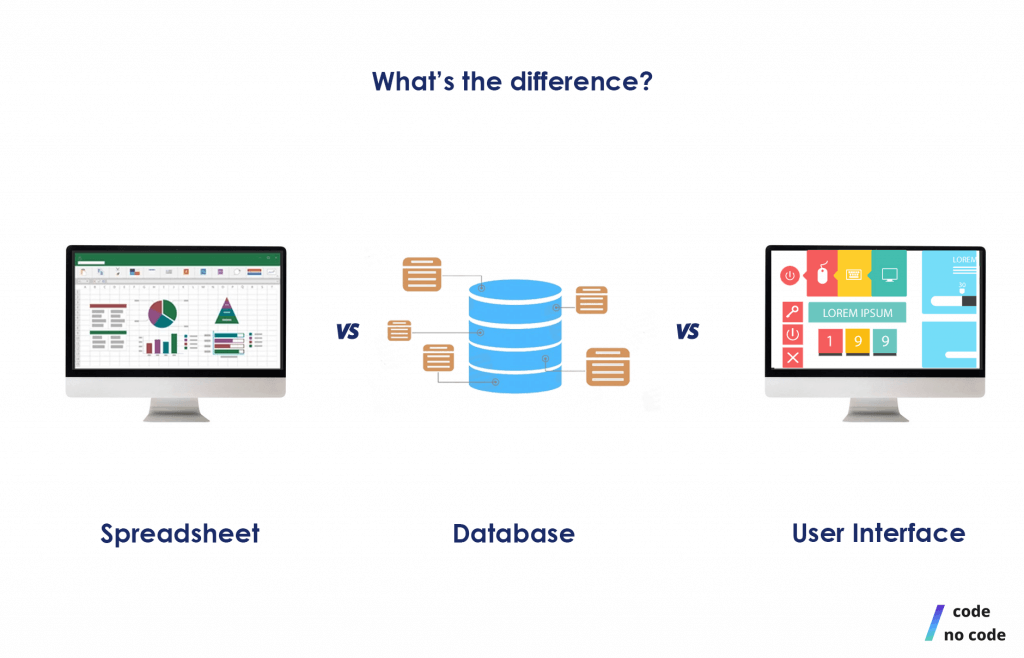Opening the Possible of Scalable Data Sources: No Coding Needed for Seamless Information Combination and Monitoring
The appearance of no-code services is changing exactly how companies approach scalable databases, enabling seamless information combination and management without the requirement for substantial coding skills. This standard shift offers significant advantages, such as boosted availability for non-technical customers and improved operational performance. As businesses seek to harness the power of their data, the crucial attributes and prominent devices that promote this shift warrant more detailed examination. What ramifications do these advancements hold for the future of data-driven decision-making?
Recognizing Scalable Databases
Just how do scalable databases suit the growing demands of modern applications? Scalable data sources are created to take care of enhancing volumes of data and customer requests without sacrificing performance.
In enhancement to scaling strategies, scalable databases often integrate advanced architectural attributes, such as sharding and replication. Sharding splits data right into smaller, workable pieces, allowing parallel processing and minimizing response times. Duplication guarantees data accessibility and toughness by developing copies of information across numerous nodes, guarding against possible data loss.
Furthermore, contemporary scalable data sources leverage cloud computer innovations, allowing vibrant source appropriation based on need. This adaptability permits companies to respond quickly to fluctuating work, ensuring ideal performance and user experience. As organizations increasingly rely on data-driven decision-making, comprehending scalable databases ends up being essential for utilizing their potential in supporting contemporary applications.
Benefits of No-Code Solutions
As organizations significantly adopt scalable data sources to manage their growing data demands, the demand for straightforward growth tools has additionally surged. No-code services are emerging as a crucial part in this landscape, using a number of vital advantages that improve functional performance and ease of access.

Secondly, these remedies considerably accelerate the advancement procedure. By eliminating the demand for coding, organizations can quickly prototype applications, iterate on layouts, and deploy solutions in a fraction of the time needed by typical methods. This dexterity enables services to respond swiftly to market needs and altering conditions.
Furthermore, no-code systems usually come outfitted with pre-built design templates and combination capacities, simplifying the link with existing systems. This decreases the complexity generally connected with information assimilation, eventually decreasing the overall expense of ownership. Consequently, companies can focus on leveraging data insights instead than obtaining stalled in technical ins and outs, optimizing their critical potential.
Trick Functions for Information Integration
Efficient data combination is vital for organizations seeking to harness the full capacity of their scalable databases. Secret features that facilitate smooth information integration include robust data ports, automated data mapping, and real-time information synchronization.
Robust information connectors allow companies to link various data sources, whether they stay on-premises or in the cloud, ensuring thorough accessibility to varied datasets - no-code. Automated data mapping streamlines the procedure of lining up inconsonant information styles and click site structures, enabling quicker and a lot more precise assimilation processes. This feature reduces the demand for hand-operated intervention, reducing the possibility for errors
Real-time data synchronization is an additional vital feature that makes sure information consistency throughout systems. By updating data in real-time, organizations can maintain a accurate and updated view of their details landscape, which is important for prompt decision-making. Furthermore, user-friendly control panels and visual analytics boost the presence of incorporated data, allowing stakeholders to derive actionable understandings effortlessly.
Finally, data governance abilities make certain compliance with laws and internal plans, guarding sensitive info while advertising a society of data integrity. Collectively, these functions equip organizations to achieve efficient and efficient information assimilation.
Popular No-Code Devices Available
Organizations increasingly rely on no-code tools to improve their information combination procedures and improve workflows. These platforms remove the need for extensive programming understanding, making it possible for individuals to produce applications and handle data with user-friendly visual interfaces. Among one of the most preferred no-code tools are Airtable, Zoho Developer, and Bubble, each offering special features tailored for various organization demands.
Airtable combines the simpleness of spread sheets with the performance of databases, allowing users to team up and organize on data successfully. Zoho Designer supplies a comprehensive collection of adjustable applications, allowing customers to automate workflows and incorporate with various other Zoho items flawlessly. Bubble sticks out for its capacity to produce advanced internet applications without coding, dealing with start-ups and ventures alike.
Furthermore, devices like Zapier and Integromat facilitate automatic operations by integrating multiple applications, allowing customers to connect information resources easily. These no-code solutions not only conserve time yet additionally empower groups to concentrate on strategic initiatives instead of technical difficulties. As organizations proceed to accept digital change, the fostering of no-code tools is readied to revolutionize the means information integration and management are come close to, driving efficiency and technology.
Real-World Use Cases
Various markets have actually successfully implemented no-code tools to deal with specific challenges and enhance functional efficiency. In the health care industry, for circumstances, service providers utilize no-code systems to improve client document management and consultation organizing. By integrating different data sources without comprehensive coding, healthcare professionals can concentrate a lot more on person care as opposed view it to administrative tasks.
In retail, businesses take advantage of no-code databases to handle supply and sales data in genuine time. no-code. This enables quick decision-making concerning supply degrees and marketing approaches, eventually improving client satisfaction and sales efficiency
Furthermore, banks have actually adopted no-code services to automate conformity reporting and data analysis, lowering hand-operated errors and increasing response times to regulative changes.

These real-world use instances illustrate the adaptability and efficacy of no-code devices in various industries, proving that scalable data sources can drive technology and operational effectiveness without the requirement for substantial programming expertise.
Verdict
Finally, the integration of no-code services right into scalable data source monitoring stands for a considerable innovation in data dealing with capabilities. By helping with seamless connections in between diverse information resources and automating process, these devices encourage organizations to effectively manage expanding data volumes without the requirement for technological expertise. The resultant improvement in operational effectiveness and data-driven decision-making emphasizes the transformative potential of these ingenious approaches within various markets, ultimately sustaining critical goals and cultivating business growth.
Replication ensures Click This Link data availability and toughness by creating copies of data across several nodes, protecting versus potential data loss. - no-code
Robust data ports make it possible for organizations to link various data resources, whether they stay on-premises or in the cloud, making certain extensive accessibility to diverse datasets. Automated information mapping simplifies the procedure of aligning disparate information styles and frameworks, permitting for quicker and extra exact integration processes.Real-time information synchronization is another critical attribute that ensures data uniformity throughout platforms. By facilitating seamless links between diverse information resources and automating workflows, these tools empower organizations to efficiently manage growing information quantities without the demand for technical competence.
Comments on “Why No-Code is the Future of Open Platform Data Source Development for Companies”